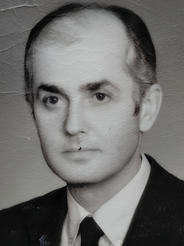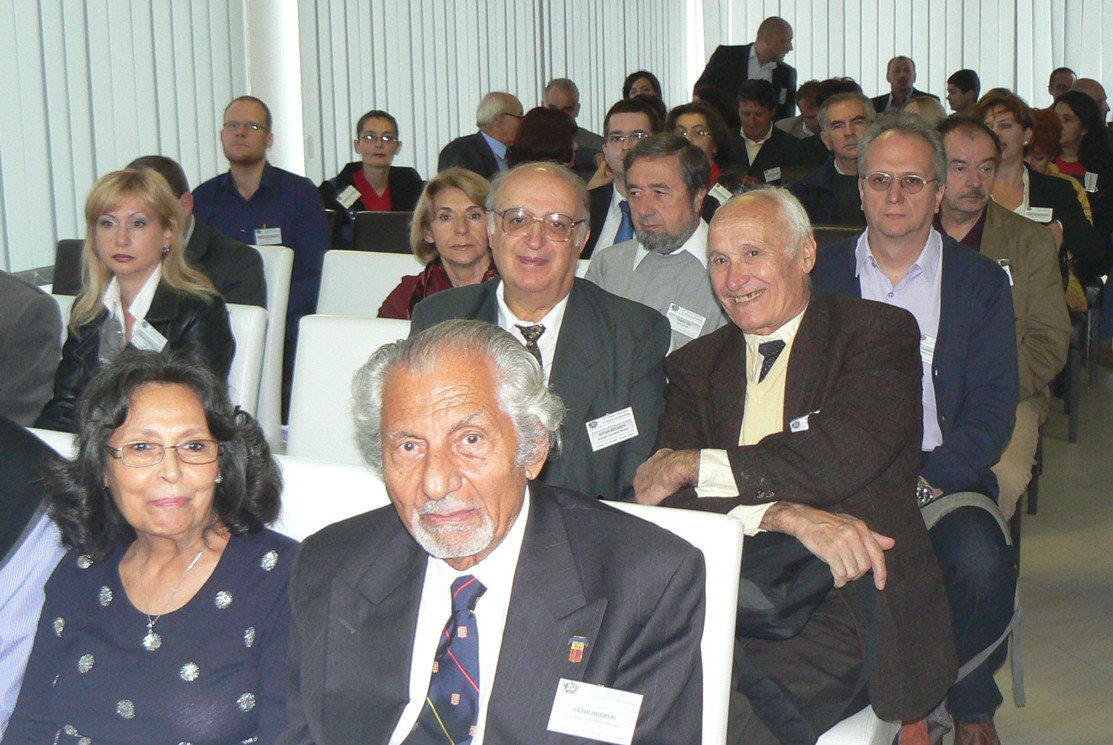Archives
-
In Memoriam – Dr. Branko Djuric
Vol. 3 No. 4 (2025)
Dr. Branko Djurić, Scientific Advisor (retired), passed away on April 8, 2025, in Belgrade. Born in 1933 in Novi Sad, he was educated in Belgrade and graduated from the First Belgrade Gymnasium (1952). He completed his studies at the Faculty of Technology and Metallurgy, University of Belgrade, and—supported by the Vinča Institute of Nuclear Sciences—earned his degree in 1958.
He obtained his Ph.D. in 1972 with the dissertation “Mechanisms and Kinetics of Phase Transformations in Uranium Alloys with Niobium,” which contributed significantly to the understanding of phase transformations, microstructural stability, and structure–property relationships in uranium–niobium alloys, with direct relevance to nuclear materials performance. His international training included the University of Birmingham (1961–1962) and, as a Fulbright scholar, MIT (1973–1974), where he worked on martensitic transformations and alloy development.
Dr. Djurić spent his entire career at the Vinča Institute, serving as Head of the Metals Department, Director of the Laboratory for Reactor Materials (1984–1991), and Deputy Director for Science until 1999. His scientific work focused on physical metallurgy of metals and alloys, with particular emphasis on phase transformations, microstructural evolution, and advanced structural characterization using X-ray diffraction and electron microscopy techniques. He played a key role in establishing modern experimental methodologies at the Institute, notably transmission electron microscopy and electron microanalysis, thereby significantly strengthening research capabilities in metallurgical and nuclear materials science.
He published widely, contributed to the translation of specialized literature, and actively participated in graduate education at the University of Belgrade. He was a co-founder and the first Editor-in-Chief of the Journal of Metallurgy (1998) and a member of the Balkan Union of Metallurgists. Dr. Branko Djurić will be remembered for his scientific contributions, institutional leadership, and lasting influence on metallurgical research.
Guest Editor,
Dr. Vesna Maksimović -
Innovative Materials in Environmental Protection
Vol. 3 No. 3 (2025) -
Corrosion Behavior of Biomaterials
Vol. 3 No. 2 (2025) -
Sustainable Industrial Waste Processing
Vol. 3 No. 1 (2025) -
Statistics and Data in Materials Science and Metallurgy
Vol. 2 No. 4 (2024)Data-driven approaches are transforming materials science and metallurgy, enabling deeper insights into complex processes, optimizing production, and improving material performance. By integrating statistical tools and computational methods, researchers and engineers can enhance process efficiency, material design, and predictive capabilities in industrial applications.
The intention of this issue is to analyze the trends in materials statistics and research that utilizes data science, experimental statistics, and computational modeling to advance the understanding and development of materials and metallurgical processes.Guest Editor,
Aleksandar Jovanović
-
Polymer composite materials: mechanics and applications
Vol. 2 No. 3 (2024)Polymer composite materials can be found in almost all aspects of modern society, from electronic components to a broad range of accessories. These materials are made of two or more constituent materials with different physical or chemical properties. They combine reinforcing fillers with a polymer matrix, resulting in improved or novel mechanical properties that cannot be achieved by either component alone. The wide range of polymer matrices and reinforcing materials allows for synthesizing various polymer composites with optimized properties.
Mechanical properties determine how materials behave when forces or loads are applied. A thorough understanding of these properties in polymer composites is crucial for their application and plays a major role in developing durable and high-quality products. Polymer composites are widely used in various fields, including the automotive industry, aircraft and aerospace, marine, sports equipment, 3D printing, construction industry, roof structures, door panels, furniture, electrical applications, and energy storage. Additionally, natural fiber-reinforced polymer composites show great promise as biomaterials in medical applications, particularly in dentistry, regenerative medicine, tissue engineering, and the production of artificial body parts.
The current issue of Metallurgical and Material Data aims to present the latest research on polymer composite materials, their mechanical properties, and potential applications.
Guest Editors,
Dr. Sladjana Meseldzija
University of Belgrade, Vinca Institute of Nuclear Sciences, National Institute of the Republic of Serbia -
Ceramic Materials for Advanced Application
Vol. 2 No. 2 (2024)The tremendous demand for ceramic materials with task-specific properties in diverse fields of human life is undeniable. These demanding applications impel the development of low-weight materials with outstanding corrosion and wear resistance and mechanical and thermal stability. Despite the other materials, ceramics have a vast spectrum of attractive properties, including low thermal conductivity, lightness, thermal shock resistance, and chemical inertness. Ceramics is hard but brittle. On the other hand, metal materials are typically malleable and ductile due to metallic bonding and its non-directional nature. They are relatively good conductors of electricity and heat, but their low corrosion resistance limits their application.
Advanced materials generally have assembled characteristics towards improved strength and toughness, higher operating temperatures, and durability. Careful control of the composition and manufacturing conditions precisely upgrades specific advanced materials, recommending them for aerospace, defense, power generation, and processing industries; for instance, developing alloys for laser hybrid welding results in a fine-grained microstructure that leads to high-strength welds. Also, the demanding application of ceramic refractories as furnace linings in metallurgy, especially in casting operations, implies materials resistant to cavitation erosion. In addition, producing durable refractories starting from natural materials could diminish the amounts of deposed mining tailing noted as waste. Furthermore, the novel characterization techniques and well-established knowledge from metallurgy provide more precise insight into strengthening and toughening mechanisms in ceramics.
Laser technology uses the phenomenon of stimulated radiation (emission) and amplification of light radiation as an energy source. In indirect laser interaction with Al-alloys, laser impact treatment is often used. In this process, significant coating mixing with the substrate is carried out, forming an alloyed surface layer with new phases and compositions. Bonds of ceramic and metal systems of various compositions can also be formed this way.
In this regard, the current issue of Metallurgical and Materials Data provides the recent research progress in advanced ceramic materials with new approaches. At present, the biggest challenge in industrial applications is fabricating engineering parts that are mechanically and thermally stable, corrosion-resistant, and durable. Thus, the advanced materials improve productivity, operating costs, performance, and quality.
Dr. Svetlana Ilić
Guest Editor
-
Advanced Biomaterials in Demanding Applications
Vol. 2 No. 1 (2024)The first dental prosthesis, which was a hybrid material from a cow's tooth connected to an Au wire, is attributed to the Etruscan civilization around 2600 years ago. It was used to replace upper incisors by connecting them to adjacent teeth with Au wire.
The intensive development of biomaterials began in the 60s of the last centuries, with the founding of the American and European Societies for Biomaterials. They accepted the definition of biomaterials, which states that these are materials intended to replace a part or the entire organ in a living organism. The very definition dictates the challenge that knowledge from other scientific fields can be transferred to completely new possibilities of biomaterials, especially in the part of demanding applications. In the 21st century, biomaterials have become a fundamental subject in academic, specialist, and doctoral studies.
In the current edition of Metallurgical and Materials Data, the goal is to show advanced biomaterials that, with an understanding of functional properties, are used for very demanding applications, if harmony is achieved in their interaction with tissue. This means that the biomaterial is a systematically and pharmacologically inert substance, designed for implantation inside or for inclusion in living systems.
Guest Editor,
Prof. Dr. Rebeka Rudolf
-
Industry 4.0 in the circular economy and environmental protection and recovery
Vol. 1 No. 4 (2023) -
MME SEE
Vol. 1 No. 3 (2023)The Association of Metallurgical Engineers of Serbia proudly presents this special issue dedicated to the Fifth Metallurgical & Materials Engineering Congress of South-East Europe (MME SEE 2023), held in Trebinje, Bosnia and Herzegovina. As a reflection of the Congress's collaborative spirit and emphasis on groundbreaking research, the selected manuscripts encompass various metallurgical and materials engineering topics. Drawing from the expertise of seasoned academics, industry professionals, and emerging researchers, this issue is a testament to the dynamic and evolving landscape of metallurgy and materials in South-East Europe.
-
Hydrometallurgy: Extraction, Recovery, and Environment
Vol. 1 No. 2 (2023)
This issue is dedicated to our dear friend, Professor Fathi Habashi.
Professor Fathi Habashi was a gifted lecturer and a prolific writer of scientific literature.
He started his professional career as a chemical engineer in Egypt, then completed his PhD in Austria, and finally moved to Canada, where he became a renowned metallurgist.
Professor Habashi visited Serbia several times, gave lectures at conferences, and visited faculties and other academic institutions.
His insightful approach to the development of metallurgy and advice on the selection of technology will remain in the memories of his colleagues.
Prof. Dr. Željko Kamberović
and
Guest Editor,
Dr. Miroslav Sokić, Principal Research Fellow
Institute for Technology of Nuclear and Other Mineral Raw Materials, Serbia
-

Advanced Functional Materials
Vol. 1 No. 1 (2023)Dear Colleagues,
Advanced Functional Materials have generated significant research and development interest in recent decades, as they are integral to numerous innovative and disruptive technologies, with the potential to transform manufacturing industries and the economy. We are delighted to announce the release of a new issue of the journal Metallurgy and Materials Data, which highlights the latest developments in the field of advanced functional materials.
The issue includes an overview of a database for biocompatible titanium-based materials, highlighting their potential medical applications, accompanied by a research paper on the corrosion stability of anodized ultrafine-grained titanium in human body solutions. Also, a study on photocatalysis shows how well Sr0.9La0.1TiO3 and Sr0.25Ca0.25Na0.25Pr0.25TiO3 perovskite-based catalysts remove metoprolol and pindolol under different types of radiation (simulated solar, LED, and UV radiation). There is also a study of how the ratio of balls to powder affects the mechanical and structural properties of CuZrB composite materials made with powder metallurgy. Lastly, the review paper explores the applications of polyaniline-based composites in environmental protection engineering.
We invite you to join us in exploring the fascinating world of advanced functional materials and to join the ongoing conversation about the future of this field.
Guest Editor,
Dr. Veljko Djokić, Principal Research Fellow
